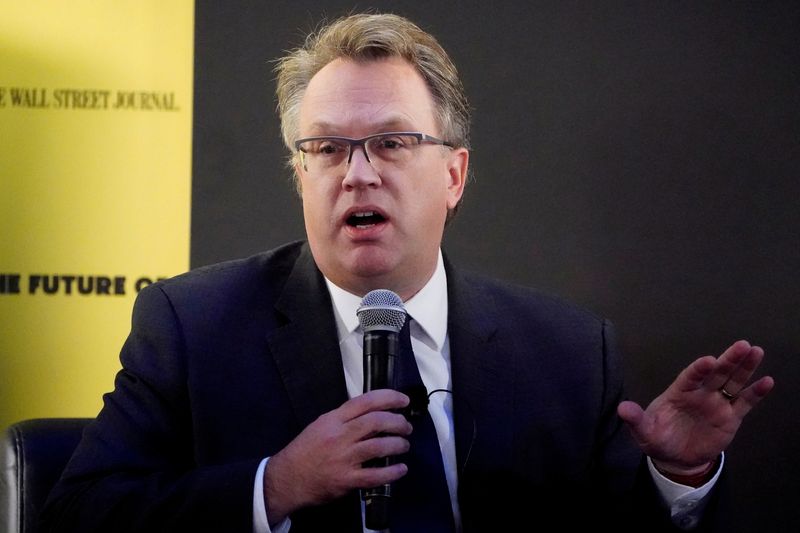Fed’s Williams: Restoring price stability is critical goal right now
2023.06.26 11:08

© Reuters. FILE PHOTO: John Williams, chief executive officer of the Federal Reserve Bank of New York, speaks at an event in New York, U.S., November 6, 2019. REUTERS/Carlo Allegri/File Photo
By Michael S. Derby
NEW YORK (Reuters) -Federal Reserve Bank of New York President John Williams played down the linkage between monetary policy and financial stability in comments made public Monday, while also warning that using rate policy to tame bubbles can bring unwanted economic pain.
His comments came from a presentation made on Sunday as part of a panel discussion held by the Bank for International Settlements. The BIS released a report over the weekend that argued central banks are at a critical point in their efforts to bring high inflation down.
Williams, who is vice-chairman of the Fed’s rate setting Federal Open Market Committee, did not comment on the monetary policy outlook in his remarks.
He did note, however, that “restoring price stability is of paramount importance because it is the foundation of sustained economic and financial stability. Price stability is not an either/or, it’s a must have.”
Williams spent the bulk of his brief remarks arguing against a firm linkage between monetary policy and the emergence of financial sector troubles.
Many have contended that the ultra low rate stance pursued by the Fed and other key central banks in the years running up to the onset of the coronavirus pandemic distorted markets and set them up for trouble later.
That said, the Fed’s super aggressive rate hike cycle of the last year has yet to result in a market reaction that would send the economy into recession, and Fed officials generally agree that the worst of the banking stress seen in the spring has now passed.
“It’s not clear that monetary policy actions play a central role in affecting the emergence of financial stability vulnerabilities,” Williams said.
He added that using monetary policy to arrest bubbles can bring potentially unacceptable costs for the broader economy.
Many Fed officials have agreed that financial sector vulnerabilities are best dealt with via regulation and bank oversight actions, rather than through interest rate policy.








